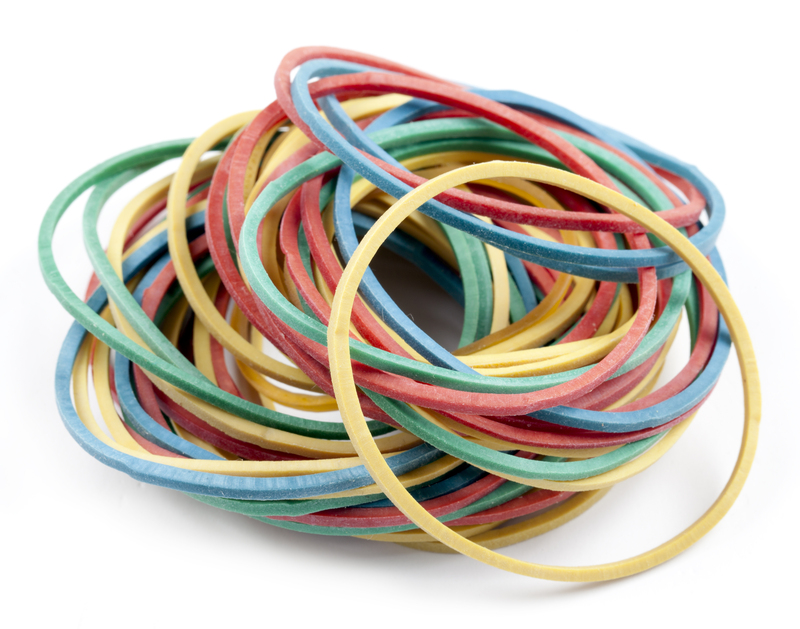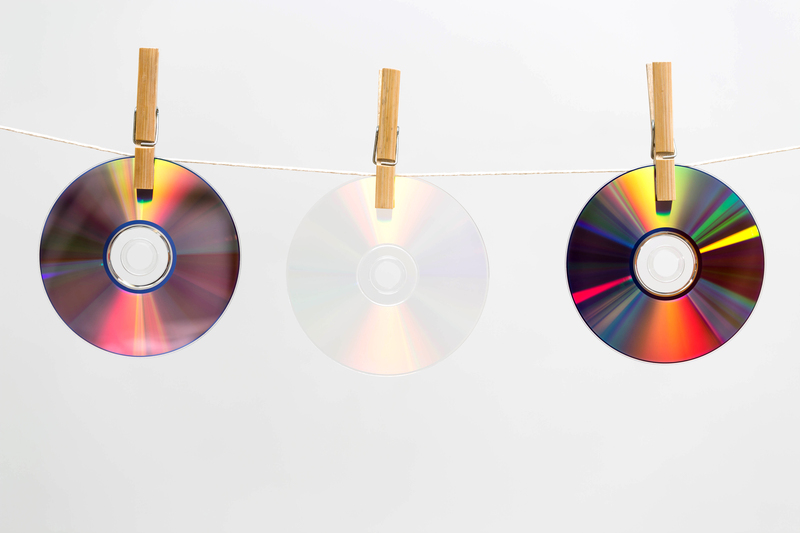Update Your Kitchen by Responsibly Disposing of Old Pans
Are your old frying pans, saucepans, or skillets taking up precious space in your kitchen cabinets? If you've been considering a kitchen refresh, don't just toss those unwanted pans into the trash. Responsibly disposing of old pans is an essential step in updating your kitchen--and contributes to a healthier planet. This comprehensive guide will walk you through sustainable and practical options for getting rid of your worn-out cookware, all while optimizing modern kitchen organization and keeping environmental protection in mind.
Why Proper Disposal of Old Pans Matters
Many people don't realize the impact throwing away kitchen pans can have on the environment. Old pans, utensils, and cookware can include materials such as non-stick coatings, metals, plastics, and rubber. When sent directly to landfill, these items may not decompose for hundreds of years, contributing to environmental pollution and, in some cases, leaching chemicals into the ground.
- Landfill issues: Pans can take up valuable space and don't break down easily.
- Resource conservation: Many pans are made of highly recyclable metals.
- Hazard avoidance: Non-stick coatings can release toxins when incinerated.
Responsible cookware disposal not only keeps your kitchen organized but also supports sustainability and resource recovery.

Signs It's Time to Retire Your Old Kitchen Pans
Before you start disposing of pans, understand how to recognize when it's time to replace them. Here are some clear signs:
- Warping or dents: If your pans have lost their shape, they won't heat evenly.
- Scratched non-stick coating: Flaking or peeling of the coating poses health risks and impacts performance.
- Discoloration or rust: Rusty or heavily stained pans may affect food quality and flavor.
- Loose or broken handles: Handles that wobble or fall off are safety hazards.
Upgrade Your Kitchen Comfort and Style
Decluttering and upgrading your pans brings not only aesthetic benefits but also improves your cooking efficiency and safety. Once you've pinpointed which pans need replacing, it's time to focus on proper and eco-friendly disposal.
Eco-Friendly Ways to Dispose of Old Pans
There are several responsible ways to recycle, repurpose, or donate your old cookware. Choose the method that best suits the type and condition of your pans. Here are some effective options:
1. Recycle Your Metal Cookware
Most pans are made of aluminum, stainless steel, or cast iron--all of which are highly recyclable. However, not all recycling programs accept cookware in curbside bins.
- Check with your local recycling center: Visit the recycling program's website or call ahead to confirm if they accept cookware, and whether handles or non-metal components must be removed.
- Remove non-metal materials: Take off any plastic, rubber, wooden handles, or glass lids--these are often not recyclable with the metal base.
- Drop off at a scrap metal yard: If curbside isn't available, a scrap metal center usually welcomes old pans and may even offer a small payment for metals like cast iron or copper.
2. Donate Usable Pans
If your old pans are still in usable condition, consider donating them. Many organizations and charities accept gently used kitchen equipment.
- Thrift stores and charities: Goodwill, Salvation Army, and local missions often accept cookware in good shape.
- Community centers: Soup kitchens, shelters, and other nonprofits may need extra pans for their cooking needs.
- Online platforms: Websites like Freecycle, Facebook Marketplace, or Craigslist can help you find local takers for unwanted pans.
Pro tip: Thoroughly clean your pans before donating to make them more appealing and useful for the next owner.
3. Upcycle or Repurpose Old Pans
With a dash of creativity, old pans can find new life in your home or garden:
- Planters: Turn cast iron skillets or saucepans into rustic plant pots.
- Wall art or clocks: Use old frying pans as bases for quirky kitchen wall decor.
- Organizers: Mount shallow pans on walls or inside cabinets for holding spices or utensils.
- Pet dish: A heavy, stable pan can make an excellent pet food or water bowl.
These creative upcycling ideas offer a fun way to blend sustainability with unique home design.
4. Trade-In and Manufacturer Takeback Programs
Some cookware brands run trade-in or recycling programs for their products:
- Mail-back schemes: Certain high-end brands offer takeback or mail-in recycling for worn pans--check manufacturer websites for details.
- Retailer recycling: Some major kitchenware or home goods stores may have recycling partnerships--ask at customer service or check their sustainability pages.
By choosing these manufacturer-approved options, you ensure your pans are processed according to best environmental practices.
Special Considerations for Non-Stick and Teflon Pans
Non-stick coatings like Teflon pose unique recycling challenges. Here's how to dispose of non-stick pans responsibly:
- Separate pans by material: Remove the handle and any non-metal parts before recycling.
- Contact recycling center: Not all centers accept non-stick coatings due to chemical treatments. Always ask first.
- Manufacturer recycling: Some brands have collection programs specifically for non-stick cookware.
Never attempt to incinerate non-stick pans yourself, as doing so may release toxic fumes.
Alternatives for Severely Damaged Non-Stick Cookware
If traditional recycling isn't available, reach out to hazardous waste facilities or check for special community collection events for items with chemical coatings.
How to Prepare Your Old Pans for Recycling or Donation
Proper preparation ensures your old pans are safe and easy to recycle or donate:
- Clean the pan thoroughly: Remove all food residues and give it a good scrub.
- Disassemble if possible: Separate metal bases from plastic, wood, or rubber handles.
- Remove glass lids: Glass may need to be recycled separately from metal pans.
Label your cookware if you're unsure about the metal type, or ask your recycling center for precise sorting instructions.
What Not to Do with Old Cookware
While it may be tempting to simply throw old pans in the trash, here's what you should avoid:
- Don't landfill if you can help it: Sending pans to landfill wastes resources and fills up space unnecessarily.
- Don't burn non-stick pans: Burning PFOA or PTFE (Teflon) coated pans releases toxic chemicals.
- Don't place pans in standard recycling bins without checking: Not every recycling facility can process cookware, especially with non-metal parts attached.
- Don't ignore local disposal guidelines: Always adhere to municipal recycling and waste regulations.
Refresh Your Kitchen Space the Right Way
Removing outdated pans is just the beginning when it comes to invigorating your kitchen environment. Here's how updating your cookware can positively impact your home and cooking routines:
- Improved health and safety: Invest in modern, non-toxic pans for chemical-free cooking.
- Better culinary results: New cookware typically offers superior heat distribution and food release.
- Efficient storage: Decluttering leaves room for only the pans and accessories you truly use and love.
- Enhanced kitchen style: Upgrading to a consistent set of pans can enhance your kitchen's visual appeal.
Tips for Buying Eco-Friendly Replacement Pans
If you're buying new cookware after clearing out the old, consider these sustainable options:
- Opt for durable materials: Stainless steel and cast iron pans last for decades with proper care.
- Choose brands with takeback policies: Support companies that help you recycle pans in the future.
- Look for non-toxic coatings: Ceramics and seasoned cast iron offer alternatives to chemical non-stick surfaces.
- Prioritize energy-efficient manufacturing: Research brands that produce cookware sustainably.

Frequently Asked Questions about Disposing of Old Pots and Pans
Can I put old pans in the curbside recycling bin?
Not always. Most curbside recycling doesn't accept pans because of their size and mixed materials. Always check with your local recycling provider first. If not accepted, scrap metal centers are the next best option.
How do I dispose of pans that have severe chemical coatings?
Pans with chemical coatings, such as Teflon, require special handling. Contact your local hazardous waste disposal facility or participate in chemical collection events to ensure safe disposal.
Can old cookware be donated?
Yes, but only if it's still usable and safe for cooking. Pans with flaking, rust, or broken handles should instead be recycled or upcycled.
What's the best way to upcycle old pans?
Get creative! Old pans can become hanging planters, quirky wall clocks, craft supply containers, or even pet bowls.
Conclusion: A Greener Kitchen Begins with Smart Pan Disposal
Refreshing your kitchen is about more than just aesthetics or convenience--it's a chance to make responsible, greener choices. Properly disposing of your old pans by recycling, donating, or upcycling not only clears your space, it conserves resources and protects the environment.
Before buying new pans, consider how your choices affect both your kitchen and the planet. By disposing of old cookware responsibly, you're taking an important step toward a sustainable and well-organized home. Embrace the satisfaction that comes from a refreshed kitchen and a clear conscience, knowing you've made a positive impact with every pan you retire the right way.